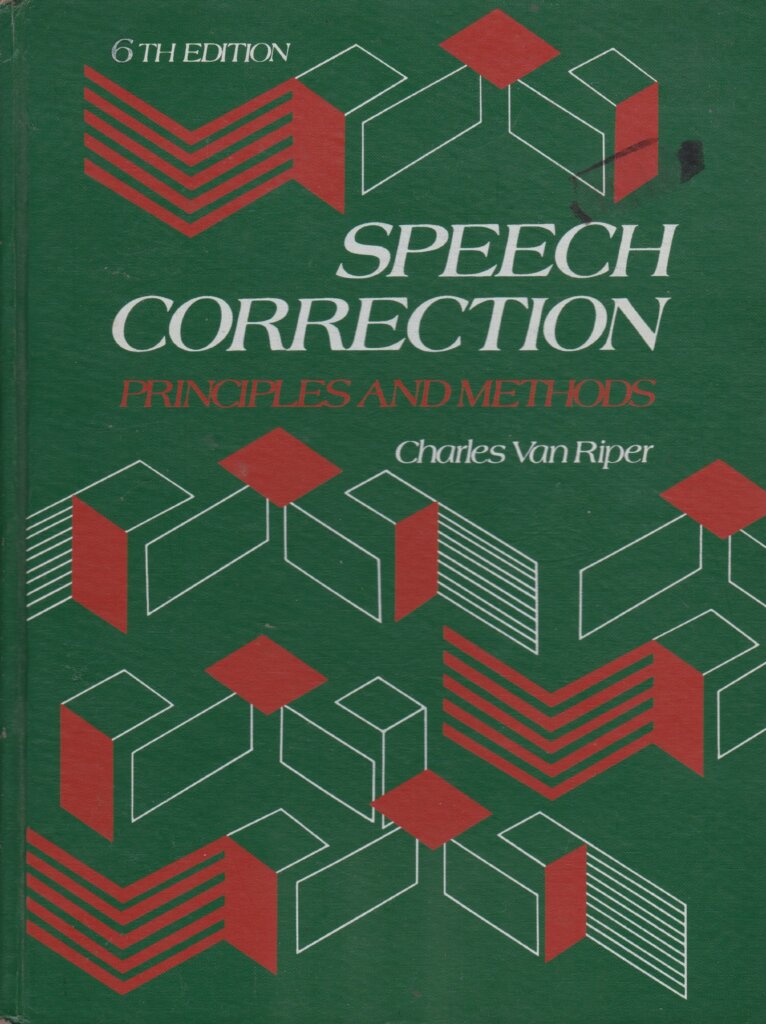SLPs are masters of goal writing. We spend literal years learning how to write specific-measurable-actionable-relevant-time-bound goals. We craft robust, descriptive targets in the restrictive ecosystem of IEP, insurance, and Medicare requirements.
Most SLPs I meet are never satisfied with their goal writing. This is a good thing! It’s a sign of how seriously we take goals and therapy plans, that we are always seeking ways to improve.
In the spirit of improvement, there’s something I want to call attention to in our standard practice goal writing: ableism.
We’re taught to write goals a certain way (SMART, IEP-compliant, etc.). Unfortunately, that “certain way” (that we’re shamed for not following, when in graduate school) is rooted in ableism. As our field grapples with how social justice issues apply in a speech therapy context, we need to examine why we write goals and how we write goals.
So, let’s start.
A primer on ableism
What is “ableism,” anyway? It’s up there with racism, sexism, and other systemic beliefs and accompanying behaviors that perpetuate injustice. Here are some definitions:
“Ableism: Ableism is the intentional or unintentional discrimination or oppression of individuals with disabilities.”
“Ableism is the discrimination of and social prejudice against people with disabilities based on the belief that typical abilities are superior. At its heart, ableism is rooted in the assumption that disabled people require ‘fixing’ and defines people by their disability. Like racism and sexism, ableism classifies entire groups of people as ‘less than,’ and includes harmful stereotypes, misconceptions, and generalizations of people with disabilities.” (Access Living)
The field of speech therapy has deep ableist roots. As a clinical profession, speech-language pathology has looked to the field of medicine in much of our approach to care and treatment of individuals with different health needs. This medical foundation has perpetuated an assumed medical model of disability: there is a biological norm and deviations from the norm are “disorders” or “diseases,” which must be corrected.
The disability rights movement describes a social model of disability. In this model, differences in bodily form and function are representative of natural biodiversity and are not inherently problematic. These differences become problematic based on society’s reactions.
To use a relevant example in our field: an autistic person is stimming but it is helpful to them in some way. The stimming doesn’t impact anyone around them, but neurotypical people (NTs) in their vicinity find this strange because NTs generally don’t have a need to stim, or not to the same degree as autistic individuals. There are more NTs than there are autistic people, and the NTs decide they are uncomfortable watching this person stim, so it is a “problem.” The NTs recommend that the autistic person receive therapy to correct this behavior.
If the word correct strikes you as overly judgmental, it might be useful to point out that our entire industry was known as “speech correction” in its early days.

You might be reading this and thinking that you’re aware of these issues, and of course, you would never tell an autistic child or adult to stop their stimming. That is good! Our field is slowly coming to recognize that working on behaviors like eye contact is ableist and wrong. But this is a piecemeal, whack-a-mole approach to moving from ableist to affirming speech therapy. How can we start selecting and creating goals in a way that is not based on an ableist framework?
Devalue Diagnostics
Here is how I was taught to identify therapy targets in graduate school:
- Review the referral
- Select diagnostic tests and interview questions based on referral intake information
- Conduct evaluation, typically consisting of a battery of tests, interview, and conversation or speech sample
- Analyze findings from evaluation data, identifying strengths and weaknesses
- Anything that falls outside of “within normal limits” is a deficit
- Create therapy plan to address deficits, with lip service to “functional goals”
Conduct therapy accordingly. After some period of time, re-assess the person’s performance. If they are now testing or performing “WNL,” they can be discharged from therapy. Mission accomplished!
This is a simplified summary of diagnostic-driven care and is extremely reflective of the medical problem. Find the broken parts and fix them. This could also be described as “find the diverse areas and standardize them.” Diagnostic-driven goal selection is inherently ableist.
Recalling sentences, following two-step directions, maintaining conversation topics, speaking fluently, articulating sounds at age-expected times...these are all communication patterns that show up on tests and get highlighted as deficits that should be “addressed” in speech therapy.
Don’t get me wrong, our diagnostic tests and processes are super helpful and important. Diagnostic tests provide a sense of how a person works, their strengths and weaknesses, preferences and dislikes. The “diagnosis” part of diagnostic tests explains why a client may be communicating in XY or Z manner, their learning patterns, and in what situations they may encounter challenges due to their diverse profile.
The diagnostic process is great at identifying why. To move from an ableist to an affirming treatment approach, though, it should not be used to identify what to do in therapy.
Client-driven Goals
Evidence-based practice has three EQUAL components: clinician expertise, evidence (external AND internal), and client values. (ASHA)
If a child undergoes diagnostic testing, parents and teachers provide input on what problems are occurring and the SLP crafts a plan accordingly: this is not evidence-based practice.
If a 10-year-old is in speech therapy for /s/ because his parents are concerned about it, but he doesn’t want to be there: that is not evidence-based practice.
If you are counting how many times a third-grader proactively uses easy onsets in class even though she doesn’t mind stuttering: that is not evidence-based practice.
If you are interrupting a child to remind them of self-regulation strategies because they are excited and emotional telling you about something that happened: that is not evidence-based practice.
All of these individual goals are great in the proper value context. I work with adults who have ADHD, and self-regulation is highly, highly valued. But when, why, and how to regulate should be decided by the person with ADHD—not by the other people in the environment for whom it would be convenient.
Truly functional goals center around life activities and experiences that the person desires. I often reference a middle schooler I worked with who was diagnosed with an expressive language disorder. Her IEP was full of traditional goals to use longer sentences and more descriptive vocabulary. When I asked what she wanted, she said, “I want to have a friend.” She found it hard to talk to people. So we worked on friend-making skills, even though she had no pragmatic deficits. We finished therapy when she had found a friend group.
Changing the Paradigm
The reality of most speech therapy practice settings is that SMART goals are required. “Whatever the kid feels like doing today” is not IEP-compliant.
Asking a 7-year-old what their values are and what they’d like to work on in therapy admittedly sounds a bit preposterous. And while older teens and adults may be able to articulate high-level experiential goals, it’s normal for non-SLPs ages 5 to 95 to be totally unaware of what is possible in speech therapy.
Most SLPs operating from a client values standpoint ask clients (even very young clients!) what they would like to work on in speech therapy. I do! But let’s pause to consider this for a moment: how can you tell a therapist what you want to work on when you don’t even know what your options are?
Some SLPs are comfortable splitting the difference and do their best to translate client goals like “I want to have friends” into concrete SMART communication behaviors. But what if we could equip clients with the ability to tell us themselves?
A Modest Proposal: Don’t Write Goals (Yet)
If a client doesn’t know enough about speech therapy to clearly articulate what they want to work on—then we should start there—before writing goals on their behalf.
What IS speech therapy, anyway? What kinds of skills and knowledge can you learn in speech therapy? What kinds of speech therapy activities can be done to help you strengthen your communication skills? As the SLP, what are some of your favorite activities and skills to work on? Why?
Why is this person in speech therapy? (“I don’t know.”) Do they think they could learn anything in speech therapy? What’s hard in class? We can use speech therapy time to help make some of those class and playground things easier.
This is not a 10-minute “rapport-building” exercise. This is multiple sessions of therapy exploration so that you can get clear and informed guidance and consent from your client about how to spend the longer arc of therapy.
“But I need a goal in the first session, for documentation purposes!” Developing the ability to do this is a goal.
“After being provided with instruction and sample activities, [Name] will identify at least three different speech therapy communication skills and select 1-2 targets for long-term treatment within 4 sessions.”
“Given a choice of 4 communication skills with instruction and sample activities in each area, [Name] will indicate preference of which skill(s) they would like to pursue [may add rationale onto this goal, if feasible for the client] by the end of 4 sessions.”
Affirming Therapy Looks Like…
An empowered client who creates their own goals may select target areas that are completely “inconsistent” with the identified strengths and weaknesses of their test scores, from a teacher or parent or SLP’s point of view. That is okay. In fact, that’s what I would expect, given how people with disabilities conceive of their own experiences compared to others around them. Speech therapy that is truly informed by social justice puts the client FULLY in the driver’s seat, which means letting them take the car in a direction that nobody thinks it should go.
Ableist speech therapy goals make choices for individuals. Affirmed speech therapy shares the full scope of options with the client (even if it means “delaying” the traditional expectations of what happens in a speech therapy session), equipping them to navigate those options, and respecting the direction they choose.
For an example of how to use this approach in stuttering therapy, check out our 3Es of Stuttering Therapy Mini-Course. The Mini-Course consists of 3 “introduction to stuttering therapy” lessons, followed by a fourth lesson dedicated solely to collaborative goal-setting.

